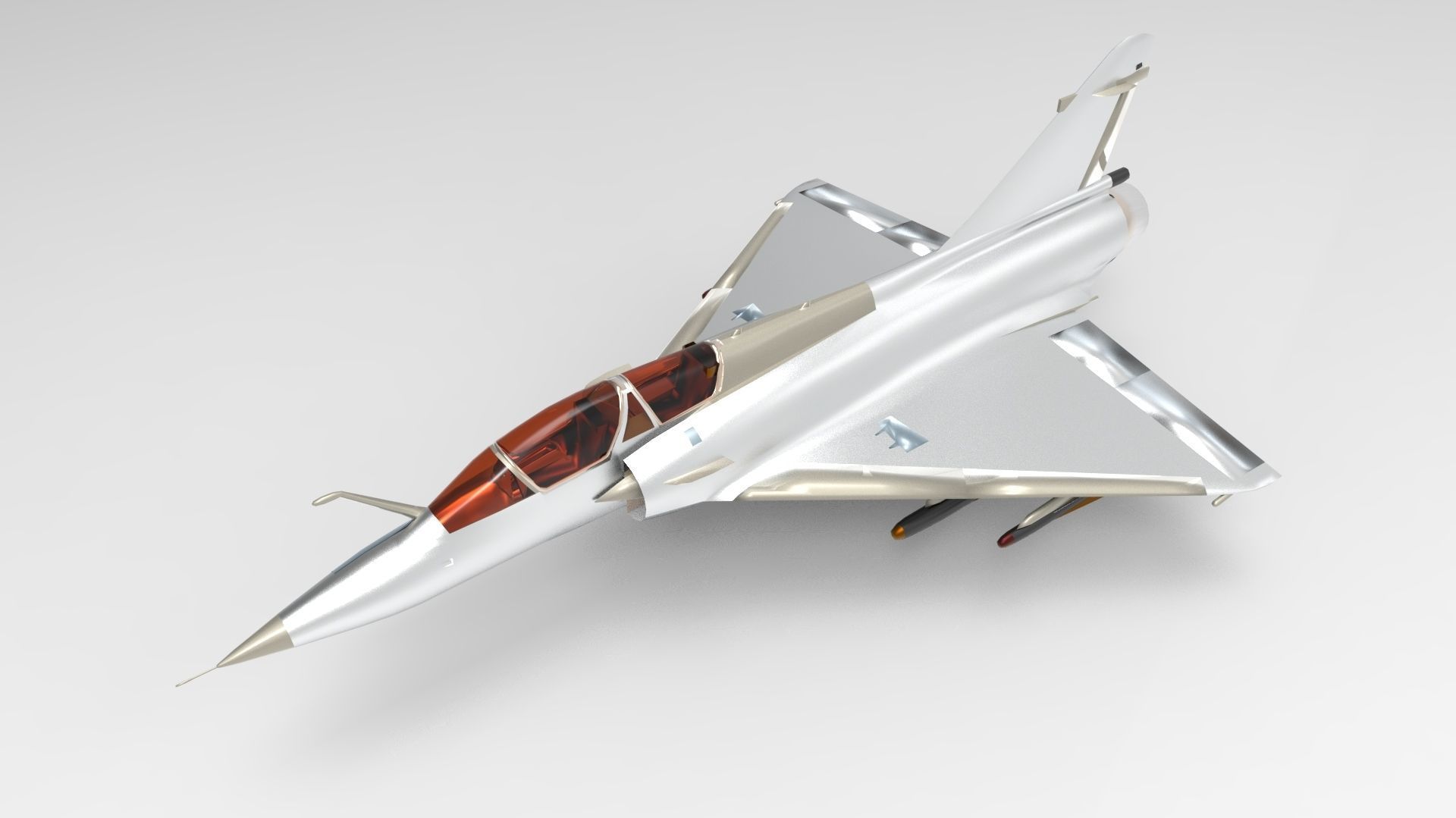
dessault mirage 2000 1 3D model
The Dassault Mirage 2000 is a French multirole, single-engine, fourth-generation jet fighter manufactured by Dassault Aviation. It was designed in the late 1970s as a lightweight fighter to replace the Mirage III for the French Air Force (Armée de l'air). The Mirage 2000 evolved into a multirole aircraft with several variants developed, with sales to a number of nations. It was later developed into the Mirage 2000N and 2000D strike variants, the improved Mirage 2000-5, and several export variants. Over 600 aircraft were built and it has been in service with 9 nations. The aircraft uses retractable Tricycle landing gear by Messier-Dowty, with twin nosewheels and a single wheel on each main gear. A runway tailhook or a fairing for a brake parachute can be fitted under the tail, which can operate in conjunction with the landing gear's carbon brakes to shorten landing distances. A removable refueling probe can be attached in front of the cockpit, offset slightly to the right of centre.[citation needed]
Its aircraft flight control system is fly-by-wire. Cockpit The Mirage 2000 is available as a single-seat or two-seat multirole fighter. The pilot flies the aircraft by means of a centre stick and left-hand throttles, with both incorporating HOTAS controls. The pilot sits on a SEM MB Mk10[20] zero-zero ejection seat (a license-built version of the British Martin-Baker Mark 10).
The instrument panel (in the Mirage 2000 C) is dominated by a Sextant VE-130 head-up display which presents data relating to flight control, navigation, target engagement, and weapon firing, and a radar screen located centrally below it.[citation needed]
Engines The SNECMA M53 afterburning turbofan was developed for the ACF, and was available for the Mirage 2000 project. It is a single-shaft engine of modular construction that is relatively light and simple compared to those of the British or American designs. The M53 consists of three low-pressure compressor stages, five high-pressure stages, and two turbine stages.[21] With the development programme consisting of 20 engines, the M53 sans suffix was first bench tested in February 1970, and became airborne on a Caravelle testbed in July 1973. Dassault conducted flight tests of the M53-2 version using its Mirage F1E testbeds starting in December 1974; this version produced 84 kilonewtons (19,000 lbf) in afterburner. The Mirage 2000 itself was powered by two versions of the M53—the M53-5, which equipped initial operational aircraft, was rated at 88 kN (20,000 lbf) of thrust with afterburner. The definitive version of the engine, the M53-P2, which equipped the majority of the type, is rated at 65 kN (15,000 lbf) in dry thrust and 95 kN (21,000 lbf) in afterburner.[21][22]
Payload and armaments The Mirage 2000 is equipped with built-in twin DEFA 554 autocannon (now GIAT 30–550 F4) 30 mm revolver-type cannons with 125 rounds each. The cannons have selectable fire rates of 1,200 or 1,800 rounds per minute.








